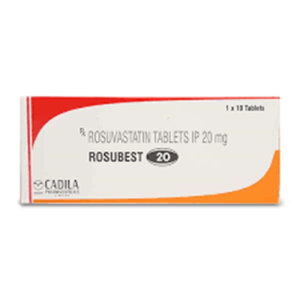Hypertension, or high blood pressure, is one of the most frequent health problems in the world. If you don’t address it, it might cause significant problems like stroke, heart attack, and kidney damage. Amlodipine is one of the most common medications that doctors provide to help regulate blood pressure. This page will provide you with a simple, clear explanation of what Amlodipine is used for, how it works, its benefits, possible side effects, and important points you should know before taking it.
What is amlodipine?
Amlodipine is a type of drug called a calcium channel blocker (CCB). It helps blood vessels relax so that blood can flow more smoothly. Amlodipine reduces blood pressure and makes the heart work less by lowering the pressure in the arteries.
There are many brand names for it, such as Norvasc, however doctors also often give out generic equivalents. Amlodipine is normally given once daily, making it a practical alternative for long-term blood pressure treatment.
Get and stay hard at 98% less cost!
What Amlodipine is used for in high blood pressure
Amlodipine is mainly used to lower high blood pressure (hypertension). This is how it helps:
- Amlodipine lowers blood pressure by relaxing the muscles in the walls of blood arteries, which makes them wider and lowers pressure.
- Keeping blood pressure in a healthy range lowers the risk of stroke, heart attack, and kidney damage.
- Amlodipine is also given to persons with angina (chest discomfort caused by less blood flow to the heart) to help with their chest pain.
- Better blood flow: Amlodipine makes blood flow more smoothly, which makes sure that the heart and organs get enough oxygen and nutrients.
What does Amlodipine do?
Think of your arteries as water pipelines to understand how Amlodipine works. The pressure goes up when the pipes are tight. Amlodipine decreases the pressure inside by relaxing and broadening the pipes (blood vessels). This makes it easier for the heart to move blood across the body.
Amlodipine acts slowly, so it doesn’t normally cause blood pressure to decrease suddenly like some other drugs do. That’s why doctors like it for long-term use.
Amlodipine’s Benefits
- Good blood pressure control: It helps keep blood pressure in the right range.
- One dose a day: easy to take, which makes patients more likely to follow the instructions.
- Fewer drug interactions: Amlodipine is usually safe to take with other medicines, unlike some other drugs.
- Doctors generally prescribe it as a maintenance prescription, so it can be used for a long time.
Dosage of Amlodipine
Most of the time, doctors start with a modest dose (5 mg per day) and then slowly raise it if they need to. The most you should take in a day is 10 mg. You can take it once a day, with or without food.
If you stop taking Amlodipine without talking to a doctor, your blood pressure could go up quickly.
- Amlodipine may have certain side effects.
- Amlodipine, like any other drug, can have negative effects. Most of them are moderate and become better with time. Some common side effects are:
- Swelling in the ankles or feet (edema)
- Pain in the head
- Flushing (becoming a heated or red face)
- Feeling dizzy or weary
- Fast heartbeat (palpitations)
It’s not common, but you should tell your doctor right away if you have any serious side effects. These include severe chest pain, an irregular heartbeat, or swelling of the lips and face.
Who Shouldn’t Take Amlodipine?
Some people may not be able to take amlodipine. People who should talk to their doctor carefully before using it are:
- People whose blood pressure is really low
- People who have serious heart problems, such heart failure
- Women who are pregnant or nursing
- People with liver illness
- Never take Amlodipine on your own; always follow your doctor’s instructions.
- Amlodipine and Lifestyle Tips
Amlodipine alone won’t be adequate to lower your blood pressure. Doctors say that taking medicine along with making healthy decisions in your life is the best way to go.
- Eating a balanced diet with little salt
- Keeping your weight in check
- Working out on a regular basis
- Cutting back on caffeine and alcohol
- Giving up smoking
- Using yoga, meditation, or relaxation practices to deal with stress
- These adjustments can make Amlodipine work better and make your heart healthier overall.
Questions that people ask a lot (FAQs)
- Is it okay to drink alcohol while taking Amlodipine?
It’s best to drink less alcohol because it can make you feel dizzy or lower your blood pressure too much.
- Is it safe to take amlodipine for a long time?
Yes, doctors often give Amlodipine to those with high blood pressure and angina for a long time.
- How long does it take for Amlodipine to start working?
Blood pressure normally starts to become better within a few hours, but it may take 1–2 weeks for the full effect to show.
- Is it okay to take Amlodipine at night?
It can be taken at any time of day, but it’s ideal to take it at the same time every day.
In conclusion
Many people trust amlodipine to lower their blood pressure and lower their risk of significant health problems including heart attacks and strokes. Millions of people throughout the world choose it since it is safe and effective for a long time and only needs to be taken once a day.




